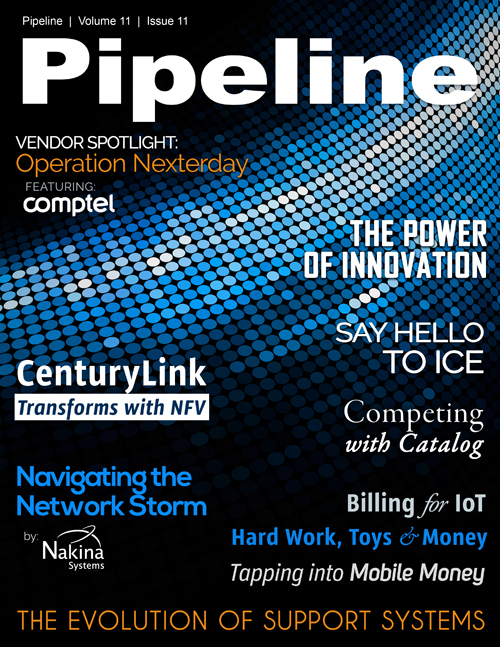IoT: Creating a Billing Inflection Point for CSPs
By: Flavio Gomes

By all accounts, the Internet of Things (IoT) is still in its early days. Analyst firm Gartner predicts more than 26 billion devices will be connected by 2020. IDC is even bolder, predicting nearly double that amount in the same timeframe. This is happening both on the consumer side of IoT, as new devices such as refrigerators and home security systems come online, and in the traditional machine-to-machine (M2M) communications space, which can be referred to as the B2B IoT.
At the same time, these devices are generating data—lots and lots of data. These tiny bytes of data are helping companies better run their businesses, communicate with their customers, and track everything from vending machine inventory to logistics performance to cargo containers to heavy machinery. However, the impact on the network is already huge—and growing—as the traffic generated on the network changes from "mostly human" to "mostly machines."
This data being gathered isn’t single purpose, as it was in the early days of M2M, where sensors gathered and relayed data, generating alerts when data strayed from the norm. Today’s B2B services are robust, generating huge amounts of data that is parsed, stored and analyzed, helping businesses uncover not only anomalies in information, but also trends that can help them predict, correct and automate future behavior and actions.
As B2B IoT grows, further pressure is going to be placed on service providers to more effectively and efficiently monetize their offerings as the paradigm shifts from low-volume, high-value events to which communications service providers are accustomed to providing and billing, to high-volume, low-cost events. In the old model, slight inaccuracies in billing wouldn’t have an enormous effect. But in the new M2M world, accuracy and precision on an individual event basis is paramount; inaccuracies can quickly add up over billions of events or usage data records. Providers need to find new ways to maximize revenues to not just stay afloat, but to thrive as the IoT continues to grow. And that requires a significant change in thinking about how we bill in the Age of the IoT. Doing so will require a new level of flexibility and agility in how service providers respond to the surge of data coming across the network.
One clear sign has emerged as the IoT continues to grow: a one-size-fits-all solution will not work across different vertical industries or, for that matter, across different businesses and business models in the same industry. These models don’t have the scale or the flexibility that the IoT demands. Unfortunately, that “one size” model is exactly what many OSS /BSS and traditional ERP systems were constructed to support.
That won’t fly with M2M and the IoT. Service providers need to find new ways to maximize margins to achieve the highest rate for a particular service. With the potential for billions of connected devices, the amount of consumption and usage information being generated is huge. How that information will be billed for and mined for intelligence is the big question. This will require granular pricing models that leverage the laws of supply and demand. In play, as well, is the need for clear-cut service catalog capabilities, so providers can accurately define pricing scenarios and bill accurately for each scenario as it arises.





















